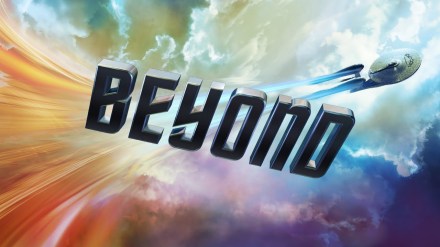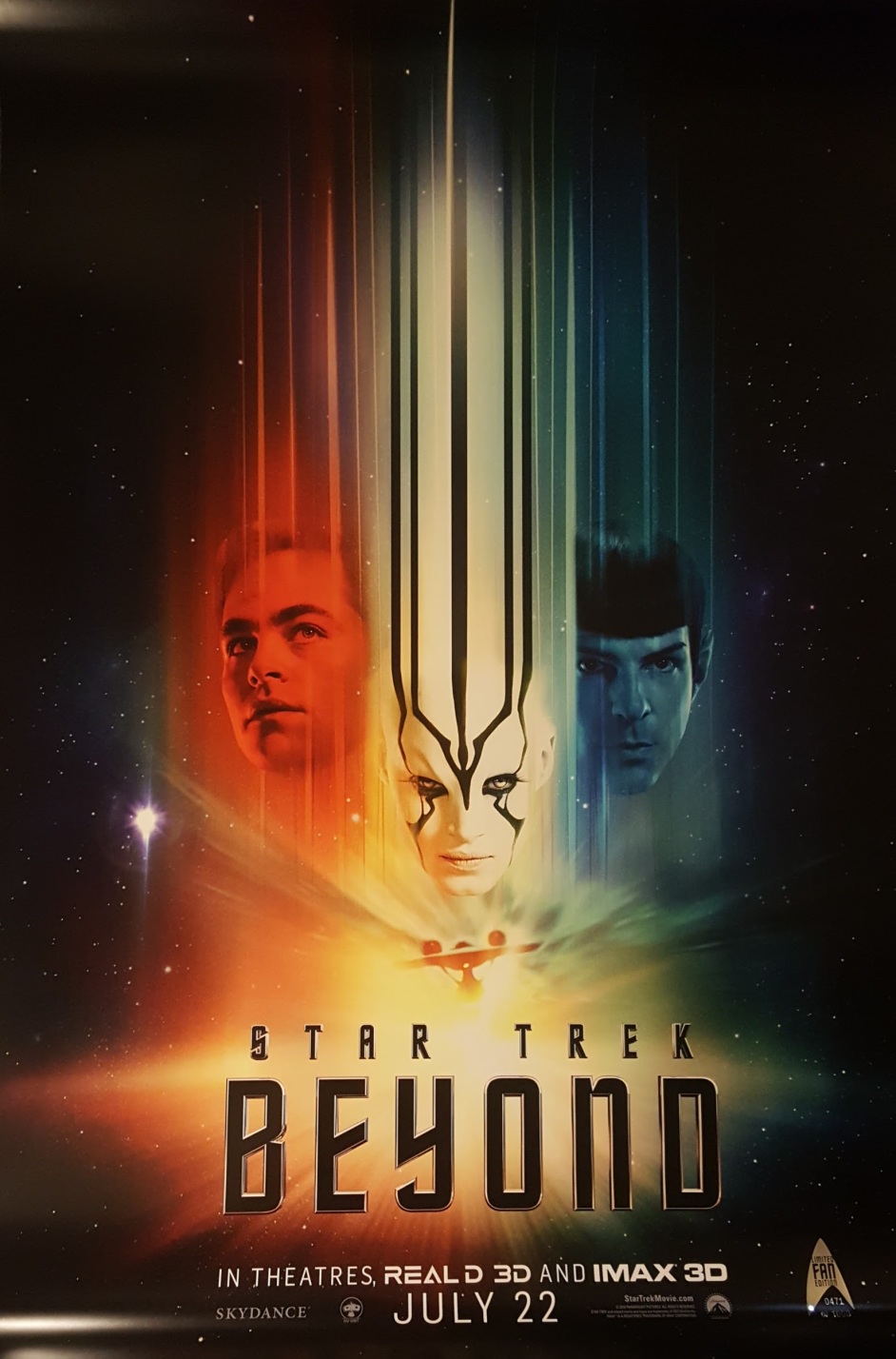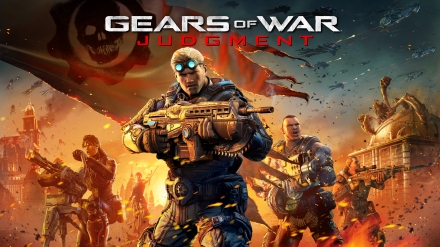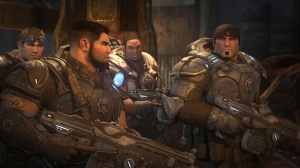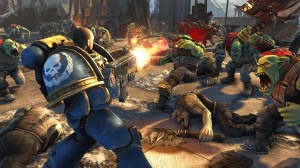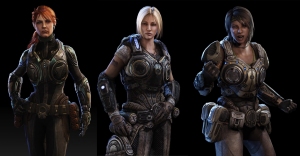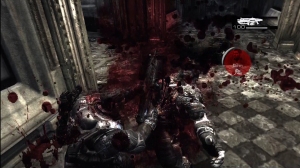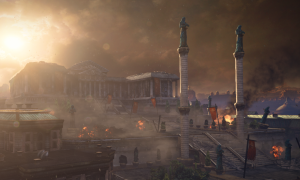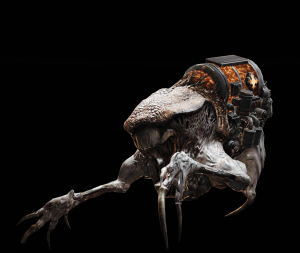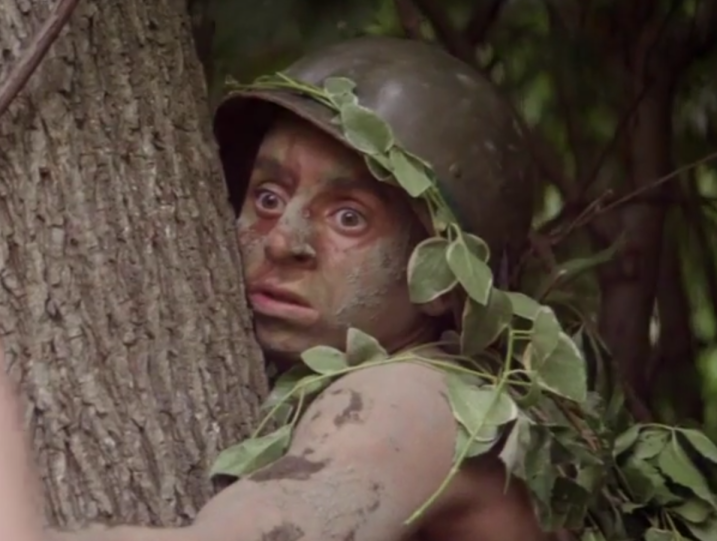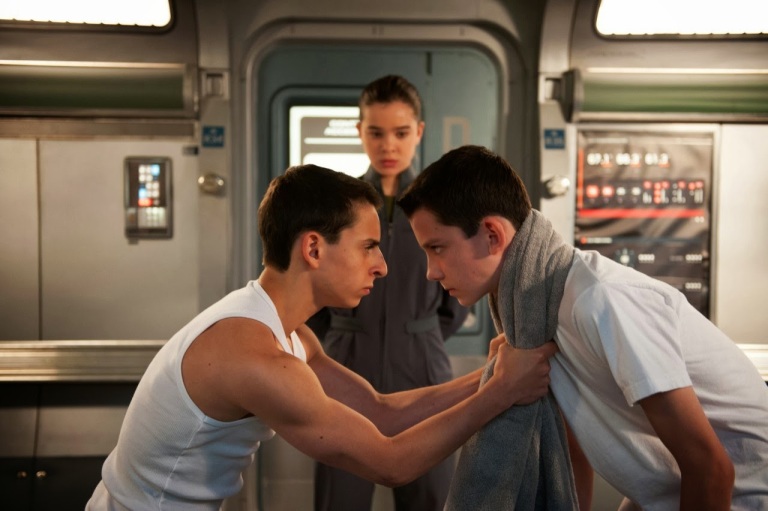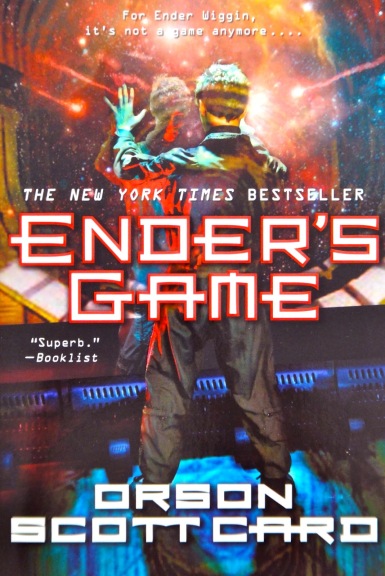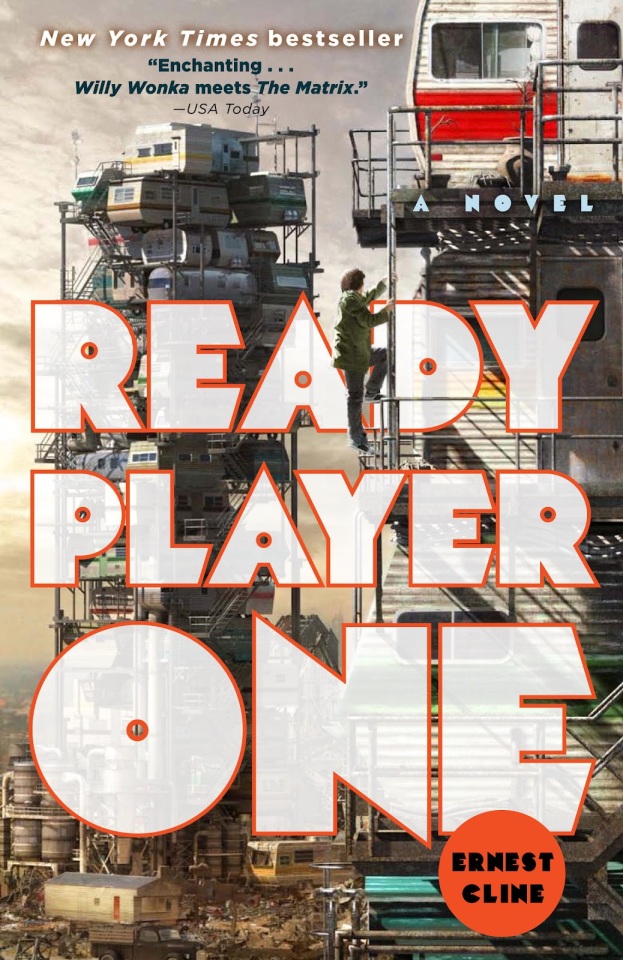For your improved enjoyment and edification, please listen to this playlist I have compiled as a compliment to this article:
That Band Scores! Playlist
The first significant instance of established music artists (both indie/alternative or mainstream) having a more active role within the soundtrack and score of a video game, and not just being licensed for use, was the first Wipeout for Playstation 2 in 1995 with featured (then) exclusive tracks by electronic/dance acts Leftfield, the Chemical Brothers and Orbital.

From L to R: Orbital (Phil and Paul Hartnoll), Leftfield (Neil Barnes), The Chemical Brothers (Tom Rowlands and Ed Simons).
(Though the track Megablast by UK dance act Bomb The Bass deserves honourable mention for its use as the title theme of the 1989 Commodore Amiga and Atari ST home computer versions of Xenon 2 that it has now become synonymous with).

On the L: Bomb The Bass (Tim Simenon).
Orbital’s track Wipeout (later retitled P.E.T.R.O.L.) was first written for the game and is almost inextricably associated with it in most people’s memory. The same thing happened with Fluke’s Atom Bomb featured in the sequel Wipeout 2097 (1996) that was also composed specifically for the game and became a non-club, mainstream hit single upon its commercial release as a result.

On the R: The members of Fluke (Mike Bryant, Jon Fugler and Mike Tournier).
The tracks featured in the Wipeout series were also selectable from the menu, so that you could skip through to one that you preferred over the current tune that was pre-selected as the particular level/racetrack default.
This is now a standard feature for games, but back then it was revolutionary, as the quality and fidelity of a home PC or game console’s sound hardware, coupled with the limitations of the data storage space on the specific product media (floppy disks, tape cassettes, cartridges, compact discs etc), had not made music of this quality and quantity possible to be included before.
As we are now well accustomed to, many modern games even feature virtual radio stations to choose to listen to in-game (such as the vehicle stereo radio systems featured in the Grand Theft Auto series) with main themes and songs even being specially written for and only available in the games by popular music artists and composers.

The “radio dial” as seen in Grand Theft Auto.
Some prominent examples of these are Danny Elfman (famous for his scores to Tim Burton movies such as Beetlejuice and Batman) writing the opening title theme for Fable (2004), Trent (Nine Inch Nails) Reznor with the main title theme for Call of Duty: Black Ops II (2012) and rock bands like Incubus, who wrote the four part track Movements of the Odyssey especially for Halo 2 (2004) (amongst other high profile acts; including guitar virtuosos Joe Satriani and Steve Vai, who played as part of the orchestra on the main score) which, like many of the songs commissioned for the game, was stylistically different from their usual output at the time, being tailored to suit its tone.
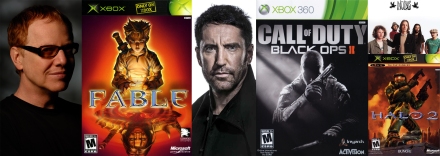
On the L: Danny Elfman. In the middle: Trent Reznor.
Alternative rock, punk and metal acts are probably the most common to be featured, or commissioned for material to be included, in games due to the visceral, anthemic and fast paced nature of those styles, especially the action, sport and racing genres. Lamb of God’s inclusion in the Iron Man 2 (2010) movie tie-in game, being a prime example, with their (then) exclusive track Hit The Wall. Metal legends Megadeth provided the title track Never Dead for the game of the same name released in 2012, as well as for the first Gears of War (2006) and Rob Zombie (of course) composed Two Lane Blacktop exclusively for Need For Speed: Underground (2003).

Top L: Lamb of God. Middle L: Megadeth. Middle R: Rob Zombie.
Though hip-hop and dance tracks are also popular for the same reasons, with the Skrillex track Make It Bun Dem (featuring Damian Marley) playing to great and humourous effect over the now infamous mission Kick the Hornet’s Nest in Far Cry 3, where a number of marijuana fields have to be torched with the track being endlessly looped over the action. The song Sleepwalking by electro-rock project The Chain Gang of 1974 was first heard in the promotional media for Grand Theft Auto V (2013) and can be heard frequently in the game, even being used as the end credit theme for one of its multiple endings. Lisa Miskovsky’s track Still Alive was also used in similar fashion as the main theme for EA’s Mirror’s Edge (2008).

Top L: Skrillex. Bottom L: Damian Marley. Bottom Middle: The Chain Gang of 1974 (Kamtin Mohager). Far R: Lisa Miskovsky.
Like well-known film and TV actors and directors, it’s become artistically legitimate, financially rewarding and technologically possible for big orchestral scores, and equally expansive but more experimental compositions, to feature in games now. This is a development which has attracted prominent motion picture composers such as Harry Gregson-Williams and Hans Zimmer to work on the score and sound design for video games, with Gregson-Williams on Metal Gear Solid: Sons of Liberty (2001), Metal Gear Solid: Ground Zeroes (2014) and Metal Gear Solid V: The Phantom Pain (2014) and Zimmer for Call of Duty: Modern Warfare 2 (2009) and Crysis 2 (2013).

On the left: Harry Gregson-Williams. On the right: Hans Zimmer.
Lesser known but culturally significant figures such as Greame Revell (best known for his scores for the Crow and Riddick film series) scored Call of Duty 2 (2005), Nitin Sawhney provided themes for Ninja Theory’s Heavenly Sword (2007) and then Enslaved: Odyssey To The West (2010), and rising names in film scores such as former Pop Will Eat Itself frontman Clint Mansell (Black Swan, Moon) composed the music for Mass Effect 3 (2012), Ramin Djawadi (Game of Thrones, Iron Man and Pacific Rim) for Medal of Honour (2010) and it’s follow up Medal of Honour: Warfighter (2012), Bear McCreary (best known for his TV work on Battlestar Galactica and Black Sails) with Dark Void (2010), and original music from multi-award winning composer Gustavos Santaolalla (21 Grams, The Motorcycle Diaries, Brokeback Mountain, Babel) can be heard in Naughty Dog’s The Last of Us (2013).

Top L: Graeme Revell. Top Middle L: Nitin Sawhney. Top Middle R: Clint Mansell. Bottom L: Ramin Djawadi. Bottom Middle: Bear McCreary. Bottom R: Gustavo Santaolalla.
Today, like major motion pictures, it’s now a standard procedure for most established or upcoming music acts to try and get a track from one of their new or future releases included on the soundtrack of a much hyped, or highly anticipated, video game or series sequel such as racer franchises like Gran Turismo and Forza, extreme sport sims like the Skate series (the first of which featured exclusive tracks from Tommy Guerrero, XXXChange, and Z-Trip) with the music for the third instalment being partially scored and designed by Devo’s Mark Mothersbaugh. Then there’s the vast multitude of WWE and other EA (Electronic Arts) sports related games, and the endless iterations of music, dance and karaoke titles such as Rock Band, Guitar Hero and Just Dance. The promotion and exposure awarded from this is invaluable for bringing your music to a wider audience.

From L to R: Tommy Guerrero, XXXChange, Z-Trip, Mark Mothersbaugh.
The Bravery’s self titled 2005 album was almost entirely licensed for use in audio-visual entertainment media, particularly video games (including; Gran Turismo 4, Tony Hawk’s American Wasteland, True Crime: New York City and MVP Baseball) before the album was even released, and they will not be the last band to do this.
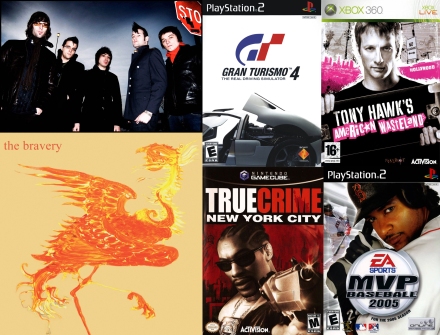
Top L: The Bravery (Sam Endicott, John Conway, Anthony Burulcich, Michael Zakarin, Mike Hindert).
Music by popular musicians has also been commissioned by game developers to be written for a specific moment, to enhance the emotional and dramatic impact of a scene. This was used very effectively in Red Dead Redemption (2010) in the form of the songs Far Away by José González, Compass by Jamie Lidell, Deadman’s Gun by Ashtar Command, Bury Me Not on the Lone Prairie by William Elliott Whitmore.

Top Middle: Jose Gonzalez. Top R: Jamie Lidell. Bottom Middle: Ashtar Command; Chris Holmes and Brian Liesgang (Ex-NIN & Filter). Bottom R: William Elliot Whitmore.
This was also notable in Remedy Entertainment’s Alan Wake, with the band Poets of The Fall performing music for the game as fictional group Old Gods of Asgard, continuing their working relationship with the developer, as they had previously composed the end theme Late Goodbye for Max Payne 2: The Fall of Max Payne (2003), with a further fine example being the track Exile Vilify by The National was written exclusively for Valve Corporation’s Portal 2 (2011) perfectly matching the tone of a scene set in one of the Rattmann’s dens.

From L to R: Poets of The Fall, The National.
A less common occurrence is having popular musical artists being actively involved in creating and designing the entire soundscape and musical score for a game. The earliest example of this was when Trent Reznor (of Nine Inch Nails and How To Destroy Angels) collaborated with Id Software on creating the sound effects, ambient audio and also scoring the soundtrack for the PC game Quake in 1996. This was followed by Rob Zombie’s exclusive additions to the musical score for Twisted Metal III for the Playstation 1 in 1998, and then by David Bowie and (his long time collaborator) Reeves Gabrels’ involvement in the David Cage (Heavy Rain and Beyond: Two Souls) directed Dreamcast/PC game Omnikron: Nomad Soul in 1999. Bowie and Gabrels wrote songs specifically for Omnikron including the tracks; Thursday’s Child, New Angels of Promise, and The Dreamers that were all later re-worked for inclusion on Bowie’s album Hours. Bowie also had some involvement creatively in the game’s storyline and design, as well as making two cameo appearances in it, first as the character “Boz” and then as the nameless singer of the fictional band “The Dreamers”.

L to R: Trent Reznor circa 1996, Rob Zombie in White Zombie circa 1996, David Bowie and Reeves Gabrels ‘Earthlings era’ circa 1997.
An excellent example of the perfect musical act being matched with the ideal project is chiptune punk group Anamanaguchi providing the score for the retro styled, side scrolling beat ’em up Scott Pilgrim VS The World, which was a tie-in with the movie of the same name. Though this came about as the result of a uniquely circular cultural effect, as their sound is heavily influenced by classic 8-16 bit game scores form the 80’s and 90’s, which were a huge influence on the original Scott Pilgrim graphic novels the film and game are based on, having inspired series writer/artist Bryan Lee O’Malley.

Top L: Anamanaguchi (Peter Berkman, James DeVito, Luke Silas, Ary Warnaar). Bottom Middle: Bryan Lee O’Malley.
Though none of these previous examples of scores by popular music acts have been a real time, reactive element of the game that responds to the player’s in-game actions. Something that would be fluid and subject to change, that could blossom or swell into more expansive and dramatic full blown orchestral movements and bombastic sounds, or ebb and recede to more minimal moodier tones, as a consequence of the players choices, without causing an abrupt cut or sudden pause in the soundtrack as it shifts to a different music cue.
This kind of approach to, and application of, reactive video game scoring wasn’t used specifically to enhance the drama, atmosphere and tension of in-game developments until notable experimental trip-hop/new jazz artist Amon Tobin was hired to provide the in-game soundtrack for Splinter Cell: Chaos Theory in 2005 (the music for the cut-scenes were scored by noted game composer Jesper Kyd). This was produced by layering different sequences together, in a style similar to Brian Eno’s method of creating ambient soundscapes, by fading different complimentary (or even dissonant) sounds into the mix of the baseline sound textures to suit the action and events occurring in the game.

From L to R: Amon Tobin, James Dooley, Mel Wesson.
This approach was taken even further by Tobin with his work on the score for Sucker Punch Productions Infamous in 2009, in collaboration with composers James Dooley, Mel Wesson and Cellist Martin Tillman. Blurring the line between sound design and music, with the score being composed primarily of recording sounds created by objects that could be found in an urban environment (such as plucking taut bungee cords like strings). It was also more responsive to the players actions and movements within the game, and the context of the given scene and events, building and then exploding into more percussive, anthemic cues in action sequences and then winding down into darker, more minimal tones for more ambiguous or atmospheric moments.
Despite what was accomplished in Infamous, it is publisher Rockstar Games that set, and keep raising, the bar for how music should be best used and incorporated into video games, starting with the innovative use of pop and rock songs in their urban Grand Theft Auto series, scoring particular kudos for getting synth-prog group Tangerine Dream (famous for their avant-garde 80’s film scores Legend, Thief and The Keep) to co-score the fifth title in the series, in collaboration with Woody Jackson, rappers/producers The Alchemist, Oh No, and DJ Shadow, which was set in the 1980’s.

Top R: Tangerine Dream (Thorsten Quaeschning, Ulrich Schnauss, Hoshiko Yamane).
They then reached a whole other plateau with the previously mentioned western Red Dead Redemption (2010), which featured an even more ambitious dynamic (in-game action and player responsive) score composed by Bill Elm and Woody Jackson. Elm was/is a mainstay of post-rock instrumental side-project Friends of Dean Martinez formed by various members of alternative country/Americana rock act Calexico (and their previous incarnations; Giant Sand and Naked Prey). Stylistically the score was a masterful and evocative homage to classic western soundtracks by the likes of Ennio Morricone (though with a more modern sensibility) without resorting to parody, that perfectly complimented the setting of the game and further cemented Rockstar’s reputation as having a great ear for picking the right talent for a project.
Like Amon Tobin’s Infamous score, most of the songs featured in RDR were constructed from ‘stems’, which are subgroups of similar sound sources. Stems may consist of any grouping of sounds, be it instruments, percussion or vocals, which can be blended together as a whole or isolated for individual playback and gradual introduction into a mix.

Top R: Woody Jackson. Bottom L: Bill Elm in Friends of Dean Martinez.
The use of a dynamic score was then advanced to the next level by the experimental noise-rock group Health, with their action responsive compositions for another Rockstar published game; Max Payne 3, in which they built upon a core of instrumental motifs that could be looped seamlessly together and then diverge smoothly at any moment into a series of additional branching and expanding stems to suit the mood or action, depending upon the player directed events happening in-game.

On the L: Health (Benjamin Jared Miller, Jake Duzsik, John Famiglietti, Jupiter Keyes).
Using alternative music acts (regardless of genre), that aren’t classically trained or experienced composers, brings a different perspective and approach to the scoring of a game. This often results in more unusual and effective compositions, suiting the mood and tone of the setting and stories better than a standard orchestral score. With games often having a non-linear structure and more unusual storylines than most other audio-visual entertainment media (other than maybe comics or animation), there’s more freedom to experiment with different sounds and styles to find the best fit.

On the R: Austin Wintory.
Though Max Payne 3 was preceded in some respects by Austin Wintory’s action-responsive score featured in Journey, Wintory is not (yet) an artist that is prominent outside of the video game industry, and it is in this way that Health’s score for Rockstar’s latest instalment in the MP series is leading by example, being one of the most cutting edge paradigms of this innovative and unconventional approach to the use of music and sound design by popular artists in games, booting the door wide open to exciting new developments and possibilities. Where it goes from here is anyone’s guess, but it’s an interesting and exciting prospect.

